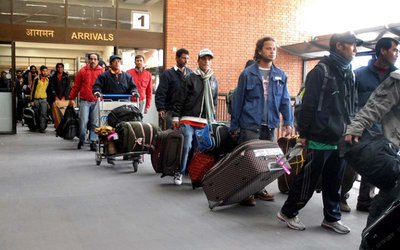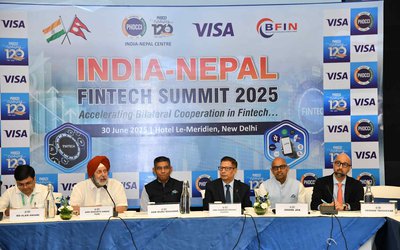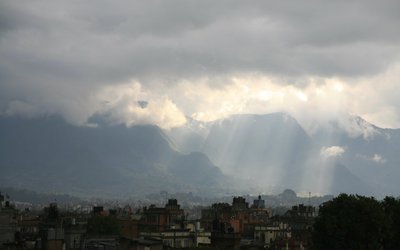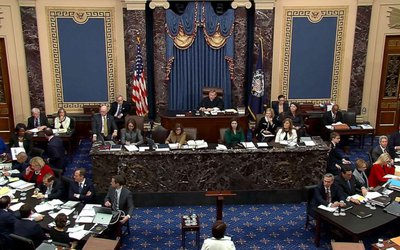The country now groans in post-election hangover, hoping as usual that a few months of time will make the problem go away. Unfortunately, the cause of the headache is not just yesterday’s campaign carousing: it comes from a serious cancer within Nepali polity that cannot be cured with the placebo of elections. Indeed, this attempt to raise a new edifice on the foundations of the failed political architecture of November 2005 has already shown early signs of its chronic hopelessness and instability.
This November’s elections, however, did manage to establish a few good things: they terminated the illegitimacy of the last self-extended parliament, giving the newly elected politicians and their parties a degree of legitimacy they had lost in May 2010; they gave space to conservative voices forcefully excluded in the first CA elections of April 2008 (remember how Surya Bahadur Thapa was not even allowed to go to his constituency then: this time he has managed to get his son elected in his place!); Nepali voters resoundingly rejected, to borrow a Chinese phrase, ethnic and regional “splitists”; and – this is what has made many coerced voters of 2008 gleeful, Jimmy Carter notwithstanding – the Maoists have got their comeuppance.
But something continues to be rotten in the state of Nepal. The unconstitutional imposition of a non-party, Chief Justice-led government in March 2013 was in essence Nepal returning politically to October 2002 (when the Seven Party Alliance unanimously passed a resolution recommending King Gyanendra to invoke Article 127 of the 1990 constitution). It was then an admission by party oligarchs of their failure to forge practical compromises and manage the country’s fractured politics. The results of this November’selections have taken the country further back to 1995, a real regression to the days when we had a hung parliament, minority and musical chair governments that gave the country not only Pajero, Lauda,Chase, Enron, SMEC and other corruption scandals galore, but also, with its politics of majoritarian bulldozing, the Maoist insurrection.The most unfortunate aspect of the upcoming CA-2 is not only that all the problems of CA-1 are still there in even more chronic metastasis but that the very oligarchs – who not only failed the country with their antics of CA-1 from 2008 but also failed to save the democracy of 1990 – are still ruling the political roost for last quarter of a century! How long can the country bear the deadweight of this creativity bereft political class without fresh upheavals is a question Nepalis are now forced to ask.
In the face of already emerging in-party squabbles, there are limits to which optimism can give solace: even die-hard apologists for the failed 2005 architecture seem to be losing hope so soon and even before CA-2 has been convened and a government has been formed. The best indicator of this despondency was an Indian friend, frequent visitor to Nepal, asking what happened with elections in Nepal: it seems that in the Delhi media, where one can read more about elections in Honduras and Haiti than about Nepal, embarrassed silence and news blackout on Nepal is the order of the day. There is no face-saving for the primary architects of the collapsed 2005 architecture, and not much hope that Nepal’sparty oligarchs with their quarter century of failures behind them will be able to deliver an acceptable constitution in the months ahead.
These November elections were never supposed to be normal, business-as-usual elections that are conducted to renew tenure, but were conducted as such. In a country where the democratic order of 1990 was demolished – more from international interference than genuine internal needs – and without a thought of what could replace it in a society as diverse and polity as fractured as in Nepal, the rituals of elections in an architectural vacuum was bound to be meaningless, and challenged from all angles.
There are serious allegations of electoral fraud from the right, left and center of the political spectrum; and they present legitimate grounds for suspicion. It is not that electoral fraud, booth capturing etc. have not been seen in Nepal before. If anything, they have been developed to a fine art over the last three decades, starting with the pro-Panchayat referendum results in 1980 to the third parliament elections of May 1999 when the second largest party of today, the UML, obstructed the House for a record 57 days on charges of electoral malpractice by the Kangress under whose leadership the elections were held. It was sorted out, thanks to the acumen of KP Bhattarai who formed a high powered investigation commission. It never produced any report but got the UML to privately acknowledge that both sides had indulged in malpractice and hence it was in the best interests of both parties to keep quiet about it and let the House resume! That option may not be available this time around.
For the first time in Nepal’s history, the army was used not just to provide outer perimeter security but to transport the ballot boxes. It was justified on the grounds that the Dash Maoists had promised violence, and indeed the army’s heavy presence did dent the street-fighting zeal of the revolutionary comrades. However, in constituencies where fraud has been alleged, party representatives were not allowed to either place their signatures or seals on the ballot boxes nor allowed to accompany the transport convoy. What happened during the transport as well as in the time gap when vote counting was suspended to when it was resumed – in constituencies where Prachanda as well as the president’s son won despite poor showingin the earlier phase of the counting –has drawn the election commission officials, the army and the president himself into dispute and has allowed the boycotting Dash Maoists to legitimize their extreme left end of Nepal’s political spectrum against that of the more right-leaning Cash Maoists.
The election results have surprised the largest vote gathering Kangress and the UML at the scale of the loss of their rivals, the Maoists and the communal parties. However, psephologists such as those at Interdisciplinary Analysts are not surprised since their nation-wide surveys just before the elections (which the election commission in their unfathomable loktantrick wisdom forbade publishing as per election code of conduct) showed that Kangress would emerge as the first, UML the second, Dash Maoists third, Cash Maoists fourth and RPP-N as the fifth largest parties. With the Dashists not only boycotting the elections but actively and selectively helping the Kangress candidates win against the Cashists and sometimes the UML, the final results were exactly what were foreseen. Gagan Thapa was seen in those surveys as the most popular leader, and ethnic federalism had no traction at the grassroots; and that is what the election results showed.
An anti-incumbency mood seems to have driven the voters with their main ire directed at the Cash Maoists. As admitted by Kangress’s Narayan Khadga in an FM interview, Kangress won by default, not by their inspiring leadership or organizational acumen (indeed they were helped by the Dash Maoist’s youthful organizational zeal!). The UML won because they have the largest country-wide network of PONGOs (party-affiliated NGOs), and the Madhesh-based parties were decimated by their own in-fighting and loss of patronage by India (indeed, one senior Madheshi leader went on to admit that their defeat was India’s defeat!).
This election in reality solves nothing. It will be months before a government might be formed, and how stable it will remain is anyone’s guess. It has dragged the office of the president into controversy, and has drawn the army into more active management of the country’s political course. It has practically eliminated those with ethnic and regional agendas (which will not go away easily), and has strengthened the political positions of the extreme right and left of the political spectrum. These changes in the public mandate compared to that of 2008 makes the fractured middle more vulnerable to attack and thus more insecure.
How such a political diversity without any agreed common ground can manage to cobble an acceptable or workable constitution is even iffier. In the months ahead, the only game changer might be if local elections can be held by April next, and a fresh crop of political leaders at the grassroots are able to collectively assert their views of what the shape of national governance should be. Otherwise the doldrums and flux of interregnum that we have witnessed since the collapse of the Panchayat a quarter of a century ago may just continue.

Dipak Gyawali
Gyawali is Pragya (Academician) of the Nepal Academy of Science and Technology (NAST) and former minister of water resources.
- Navigating An Uncharted, Unravelling World Order
- Jun 19, 2025
- Overcoming Indo-Pak Conflict The Dara Shikoh Way
- May 13, 2025
- Re-Thinking Democracy: Why South Asians Are worried
- Mar 17, 2025
- Nepal’s Governance Mired In Endemic Corruption
- Feb 20, 2025
- What Might The Age Of Trump Look Like?
- Jan 22, 2025












